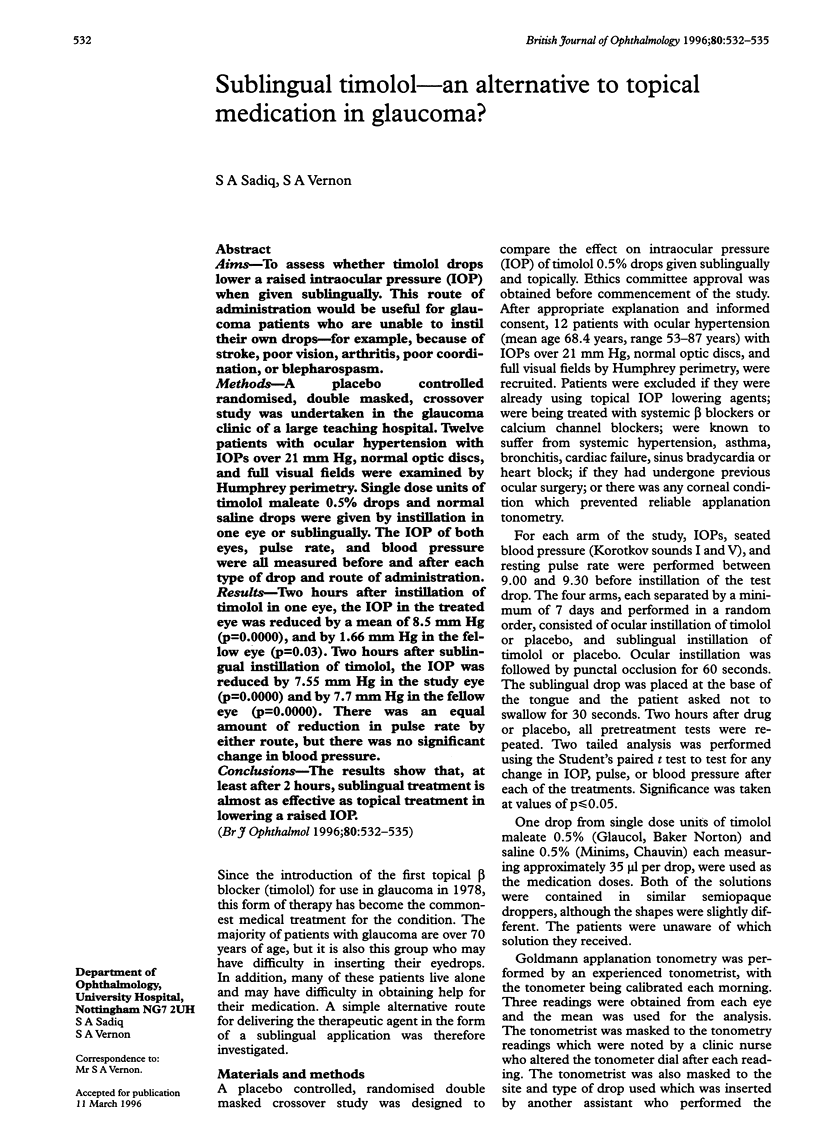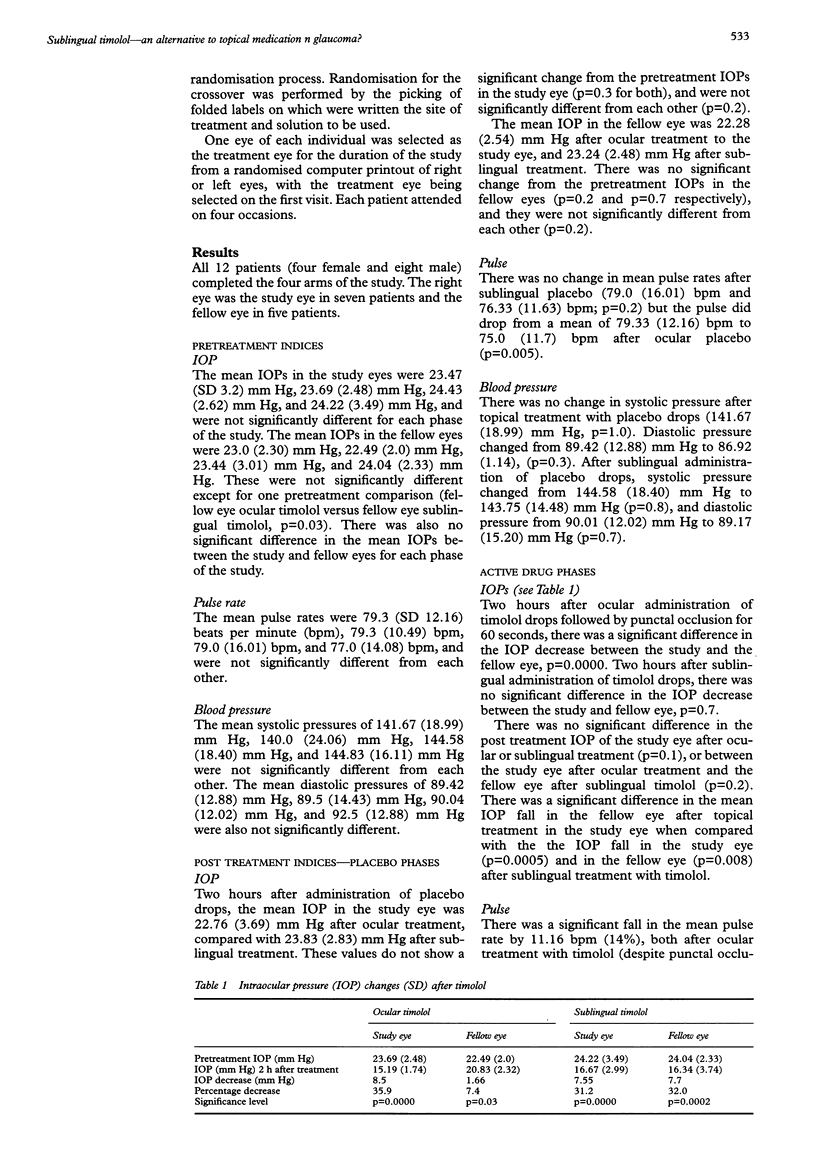Abstract
AIMS--To assess whether timolol drops lower a raised intraocular pressure (IOP) when given sublingually. This route of administration would be useful for glaucoma patients who are unable to instil their own drops--for example, because of stroke, poor vision, arthritis, poor coordination, or blepharospasm. METHODS--A placebo controlled randomised, double masked, crossover study was undertaken in the glaucoma clinic of a large teaching hospital. Twelve patients with ocular hypertension with IOPs over 21 mm Hg, normal optic discs, and full visual fields were examined by Humphrey perimetry. Single dose units of timolol maleate 0.5% drops and normal saline drops were given by instillation in one eye or sublingually. The IOP of both eyes, pulse rate, and blood pressure were all measured before and after each type of drop and route of administration. RESULTS--Two hours after instillation of timolol in one eye, the IOP in the treated eye was reduced by a mean of 8.5 mm Hg (p = 0.0000), and by 1.66 mm Hg in the fellow eye (p = 0.03). Two hours after sublingual instillation of timolol, the IOP was reduced by 7.55 mm Hg in the study eye (p = 0.0000) and by 7.7 mm Hg in the fellow eye (p = 0.0000). There was an equal amount of reduction in pulse rate by either route, but there was no significant change in blood pressure. CONCLUSIONS--The results show that, at least after 2 hours, sublingual treatment is almost as effective as topical treatment in lowering a raised IOP.
Full text
PDF



Selected References
These references are in PubMed. This may not be the complete list of references from this article.
- Alvan G., Calissendorff B., Seideman P., Widmark K., Widmark G. Absorption of ocular timolol. Clin Pharmacokinet. 1980 Jan-Feb;5(1):95–100. doi: 10.2165/00003088-198005010-00004. [DOI] [PubMed] [Google Scholar]
- Dunham C. N., Spaide R. F., Dunham G. The contralateral reduction of intraocular pressure by timolol. Br J Ophthalmol. 1994 Jan;78(1):38–40. doi: 10.1136/bjo.78.1.38. [DOI] [PMC free article] [PubMed] [Google Scholar]
- Marén N., Alvan G., Calissendorff B. M., Haglund K., Seideman P. Additive intraocular pressure reducing effect of topical timolol during systemic beta-blockade. Acta Ophthalmol (Copenh) 1982 Feb;60(1):16–23. doi: 10.1111/j.1755-3768.1982.tb05777.x. [DOI] [PubMed] [Google Scholar]
- Phillips C. I., Howitt G., Rowlands D. J. Propranolol as ocular hypotensive agent. Br J Ophthalmol. 1967 Apr;51(4):222–226. doi: 10.1136/bjo.51.4.222. [DOI] [PMC free article] [PubMed] [Google Scholar]
- Zimmerman T. J., Kaufman H. E. Timolol, dose response and duration of action. Arch Ophthalmol. 1977 Apr;95(4):605–607. doi: 10.1001/archopht.1977.04450040071009. [DOI] [PubMed] [Google Scholar]
- Zimmerman T. J., Kooner K. S., Kandarakis A. S., Ziegler L. P. Improving the therapeutic index of topically applied ocular drugs. Arch Ophthalmol. 1984 Apr;102(4):551–553. doi: 10.1001/archopht.1984.01040030429017. [DOI] [PubMed] [Google Scholar]


